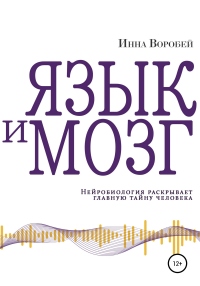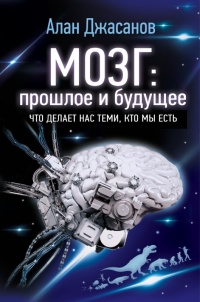Ознакомительная версия. Доступно 21 страниц из 101
Habibi, A., Damasio, A., Ilari, B., Elliott Sachs, M., & Damasio, H. (2018). Music training and child development: A review of recent findings from a longitudinal study. Annals of the New York Academy of Sciences.
Hafting, T., Fyhn, M., Molden, S., Moser, M.-B., & Moser, E. I. (2005). Microstructure of a spatial map in the entorhinal cortex. Nature, 436(7052), 801–806.
Hahne, A., & Friederici, A. D. (1999). Electrophysiological evidence for two steps in syntactic analysis: Early automatic and late controlled processes. Journal of Cognitive Neuroscience, 11(2), 194–205.
Halberda, J., & Feigenson, L. (2008). Developmental change in the acuity of the «number sense»: The approximate number system in 3-, 4-, 5-, and 6-year-olds and adults. Developmental Psychology, 44(5), 1457–1465.
Hannagan, T., Amedi, A., Cohen, L., Dehaene-Lambertz, G., & Dehaene, S. (2015). Origins of the specialization for letters and numbers in ventral occipitotemporal cortex. Trends in Cognitive Sciences, 19(7), 374–382.
Hannagan, T., Nieder, A., Viswanathan, P., & Dehaene, S. (2017). A random-matrix theory of the number sense. Philosophical Transactions of the Royal Society B: Biological Sciences, 373(1740), 20170253.
Hartshorne, J. K., Tenenbaum, J. B., & Pinker, S. (2018). A critical period for second language acquisition: Evidence from ⅔ million English speakers. Cognition, 177, 263–277.
Hassabis, D., Kumaran, D., Summerfield, C., & Botvinick, M. (2017). Neuroscience-inspired artificial intelligence. Neuron, 95(2), 245–258.
Hattie, J. (2008). Visible learning. London and New York, NY: Routledge.
Hattie, J. (2017). L’apprentissage visible pour les enseignants: Connaître son impact pour maximiser le rendement des élèves. Québec: Presses de l’Université du Québec.
Hauser, M. D., Chomsky, N., & Fitch, W. T. (2002). The faculty of language: What is it, who has it, and how did it evolve? Science, 298(5598), 1569–1579.
Hauser, M. D., & Watumull, J. (2017). The Universal Generative Faculty: The source of our expressive power in language, mathematics, morality, and music. Journal of Neurolinguistics, 43 Part B, 78–94.
Hay, J. F., Pelucchi, B., Graf Estes, K., & Saffran, J. R. (2011). Linking sounds to meanings: Infant statistical learning in a natural language. Cognitive Psychology, 63(2), 93–106.
Heckman, J. J., Moon, S. H., Pinto, R., Savelyev, P. A., & Yavitz, A. (2010). The rate of return to the HighScope Perry Preschool Program. Journal of Public Economics, 94(1), 114–128.
Heilbron, M., & Meyniel, F. (2019). Confidence resets reveal hierarchical adaptive learning in humans. PLOS Computational Biology, 15(4), e1006972. doi.org/10.1371/journal.pcbi.1006972.
Held, R., & Hein, A. (1963). Movement-produced stimulation in the development of visually guided behavior. Journal of Comparative and Physiological Psychology, 56(5), 872–876.
Hensch, T. K. (2005). Critical period plasticity in local cortical circuits. Nature Reviews Neuroscience, 6(11), 877–888.
Hespos, S. J., & Baillargeon, R. (2008). Young infants’ actions reveal their developing knowledge of support variables: Converging evidence for violation-of-expectation findings. Cognition, 107(1), 304–316.
Hinton, G. E., Dayan, P., Frey, B. J., & Neal, R. M. (1995). The «wake-sleep» algorithm for unsupervised neural networks. Science, 268(5214), 1158–1161.
Hinton, G. E., Osindero, S., & Teh, Y.-W. (2006). A fast learning algorithm for deep belief nets. Neural Computation, 18(7), 1527–1554.
Hiscock, H., Sciberras, E., Mensah, F., Gerner, B., Efron, D., Khano, S., & Oberklaid, F. (2015). Impact of a behavioural sleep intervention on symptoms and sleep in children with attention deficit hyperactivity disorder, and parental mental health: Randomised controlled trial. BMJ (Clinical Research Ed.), 350, h68.
Hoeft, F., McCandliss, B. D., Black, J. M., Gantman, A., Zakerani, N., Hulme, C., Gabrieli, J. D. E. (2011). Neural systems predicting long-term outcome in dyslexia. Proceedings of the National Academy of Sciences, 108(1), 361–366.
Holtmaat, A., & Caroni, P. (2016). Functional and structural underpinnings of neuronal assembly formation in learning. Nature Neuroscience, 19(12), 1553–1562.
Horikawa, T., Tamaki, M., Miyawaki, Y., & Kamitani, Y. (2013). Neural decoding of visual imagery during sleep. Science, 340(6132), 639–642.
Houdé, O., Zago, L., Mellet, E., Moutier, S., Pineau, A., Mazoyer, B., & Tzourio– Mazoyer, N. (2000). Shifting from the perceptual brain to the logical brain: The neural impact of cognitive inhibition training. Journal of Cognitive Neuroscience, 12(5), 721–728.
Huber, R., Ghilardi, M. F., Massimini, M., & Tononi, G. (2004). Local sleep and learning. Nature, 430(6995), 78–81.
Hurley, M. M., Dennett, D. C., & Adams, R. B. (2011). Inside jokes: Using humor to reverse-engineer the mind. Cambridge, MA: MIT Press.
Huttenlocher, P. R., & Dabholkar, A. S. (1997). Regional differences in synaptogenesis in human cerebral cortex. Journal of Comparative Neurology, 387(2), 167–178.
Hutton, J. S., Horowitz-Kraus, T., Mendelsohn, A. L., DeWitt, T., Holland, S. K., & C-MIND Authorship Consortium. (2015). Home reading environment and brain activation in preschool children listening to stories. Pediatrics, 136(3), 466–478.
Hutton, J. S., Phelan, K., Horowitz-Kraus, T., Dudley, J., Altaye, M., DeWitt, T., & Holland, S. K. (2017). Shared reading quality and brain activation during story listening in preschool-age children. Journal of Pediatrics, 191, 204–211.e1.
Iriki, A. (2005). A prototype of Homo faber: A silent precursor of human intelligence in the tool-using monkey brain. // S. Dehaene, J.-R. Duhamel, M. D. Hauser, & G. Rizzolatti (Eds.), From monkey brain to human brain (pp. 253–271). Cambridge, MA: MIT Press.
Isaacs, E. B., Edmonds, C. J., Lucas, A., & Gadian, D. G. (2001). Calculation difficulties in children of very low birthweight: A neural correlate. Brain, 124(9), 1701–1707.
Isingrini, M., Perrotin, A., & Souchay, C. (2008). Aging, metamemory regulation and executive functioning. Progress in Brain Research, 169, 377–392.
Iuculano, T. (2016). Neurocognitive accounts of developmental dyscalculia and its remediation. Progress in Brain Research, 227, 305–333.
Izard, V., Dehaene-Lambertz, G., & Dehaene, S. (2008). Distinct cerebral pathways for object identity and number in human infants. PLOS Biology, 6(2), 275–285.
Ознакомительная версия. Доступно 21 страниц из 101
























